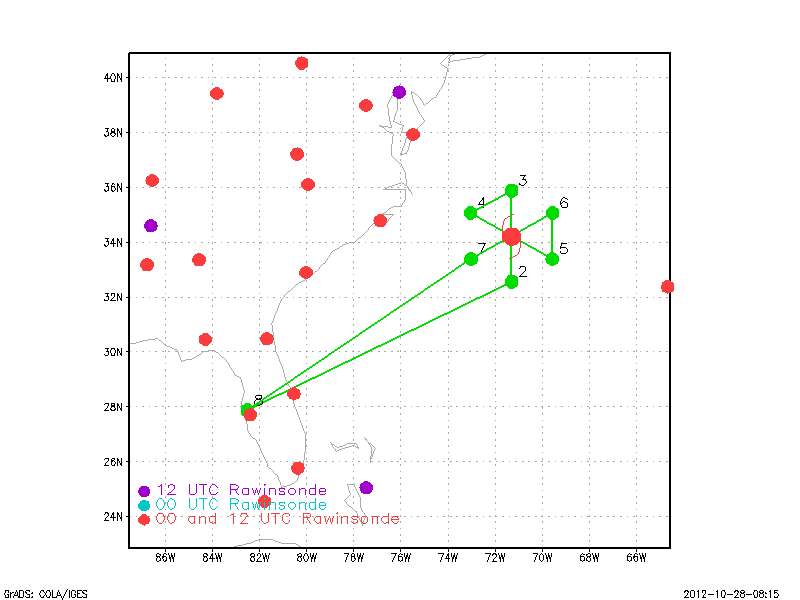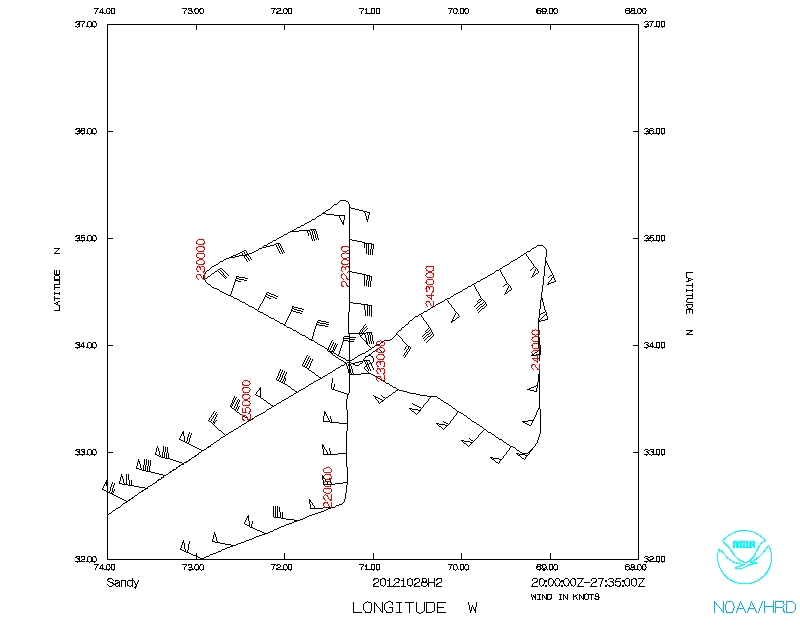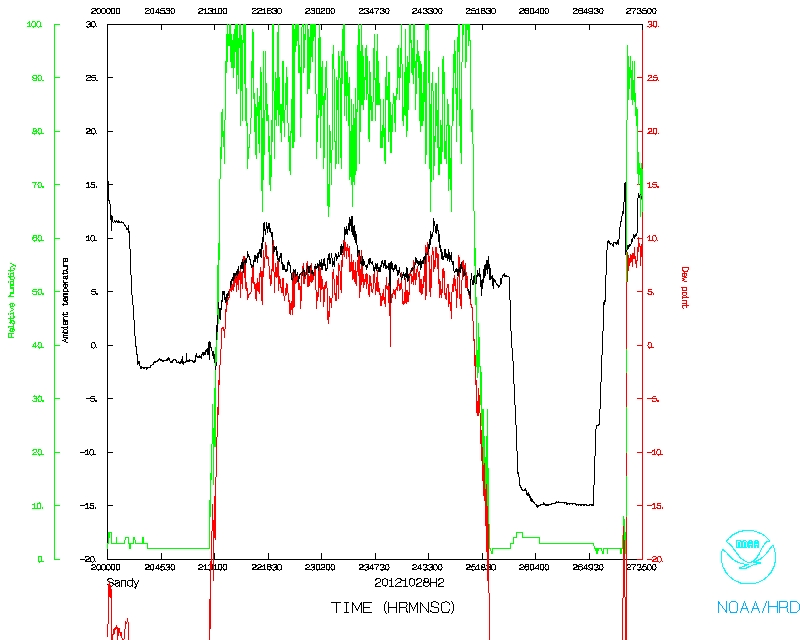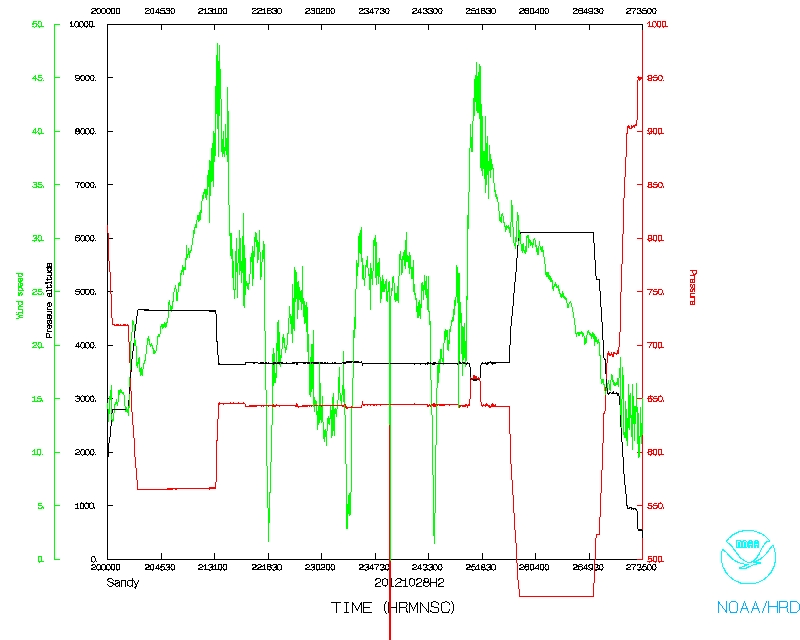
Figure 1. Proposed track for 20121028H2
| Aircraft Commander | Mark Nelson |
| Co-pilot | Chris Kerns |
| Co-pilot | Mark Sweeney |
| Navigator | Chris Sloan |
| Flight Engineer | Klippel |
| Flight Director | Ian Sears |
| Data Technician | Terry Lynch |
| Data Technician | Jeff Newnam |
| AVAPS | Jeff Smith |
| Electronics Technician | Bobby Peek |
| Lead Scientist | Shirley Murillo (HRD) |
| Radar Scientist | John Gamache (HRD) |
| Observing Scientist | Liu Yongzuo (U Oklahoma) |

Mission Plan :
Fly an EMC tasked TDR mission into Hurricane Sandy. This is the last NOAA P3 mission into Sandy. The proposed track (Fig.1) is a butterfly pattern with the IP on the south and FP on the southwest. Each flight leg is 100mn long with dropsondes launched at the end, mid points and first and last center pass. AXBT should be launched in combination with the dropsondes except in the center. The flight will be at 12,000ft and is scheduled to be 8 hours long. Sandy is looking better organized. There is still strong vertical wind shear on the west side of the circulation (Fig. 2). The satellite visible presentation shows a curved band wrapping around the center (Fig. 3).
Mission Summary :
| Take off | Landing
| MacDill AFB, FL | 19:53 UTC
| MacDill AFB, FL | 03:36 UTC
| Penetrations
| 3
| | ||||
Takeoff was at 1953 UTC. The pattern was flown as planned (Fig. 4.). There was a strong mid-level jet on the south and southwest part of the storm. Included here are images of the horizontal winds within the inner core of Sandy sampled from the tail Doppler radar on the P-3 late on 28 October 2012. These images are at three altitudes, 1 km, 4 km, and 7 km, (Fig. 5) using a composite of winds from three legs from the P-3 oriented southwest-northeast, north-south, and southeast-northwest. Also plotted on the 1-km altitude analysis are the locations of dropsondes deployed by the P-3 (plotted using standard station symbols). These analyses show that Sandy's precipitation is still pretty organized, with the bulk of the precipitation much more centered over the inner core of the storm suggesting that Sandy continues to resist dry air getting into the core. There is a clear inner wind maximum at 50 km radius southeast of the center at all altitudes shown, however the strongest winds remain over 150 km from the center. The strongest winds are still from southwest of the circulation center at 1 -km altitude, but southeast of the center at 7- km altitude, suggesting that the shear direction is increasing from the southwest aloft as the storm moves northward and interacts more closely with the trough approaching from the west. On our last pass heading to the FP, we descended down to 10,000ft to avoid ice/graupel. It was a lot more turbulent there so once we finished our pattern we went up to 20,000ft for our ferry back to KMCF. We landed at 0337 UTC.
|
(a) |
(b) |
|
(c) | |
Problems :
No major problems during flight. All sondes worked well. Two AXBTs did not report SSTs. The LF radar went down for a short period and then was up.
Expendables used in mission:
GPSsondes: 15 (all good)
AXBTs: 12 (10 good)
Shirley T. Murillo
Nov. 6, 2012
Mission Data :
 Flight track |
 Temperature and Moisture |
 Wind and Atlitude |
Flight Director's manifest | Flight Director log | LPS log | Radar log | Drop log | AXBT
Page last updated Feb. 7, 2013
Return to Mission page.